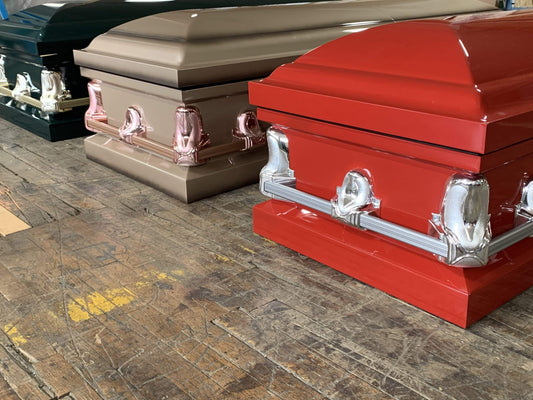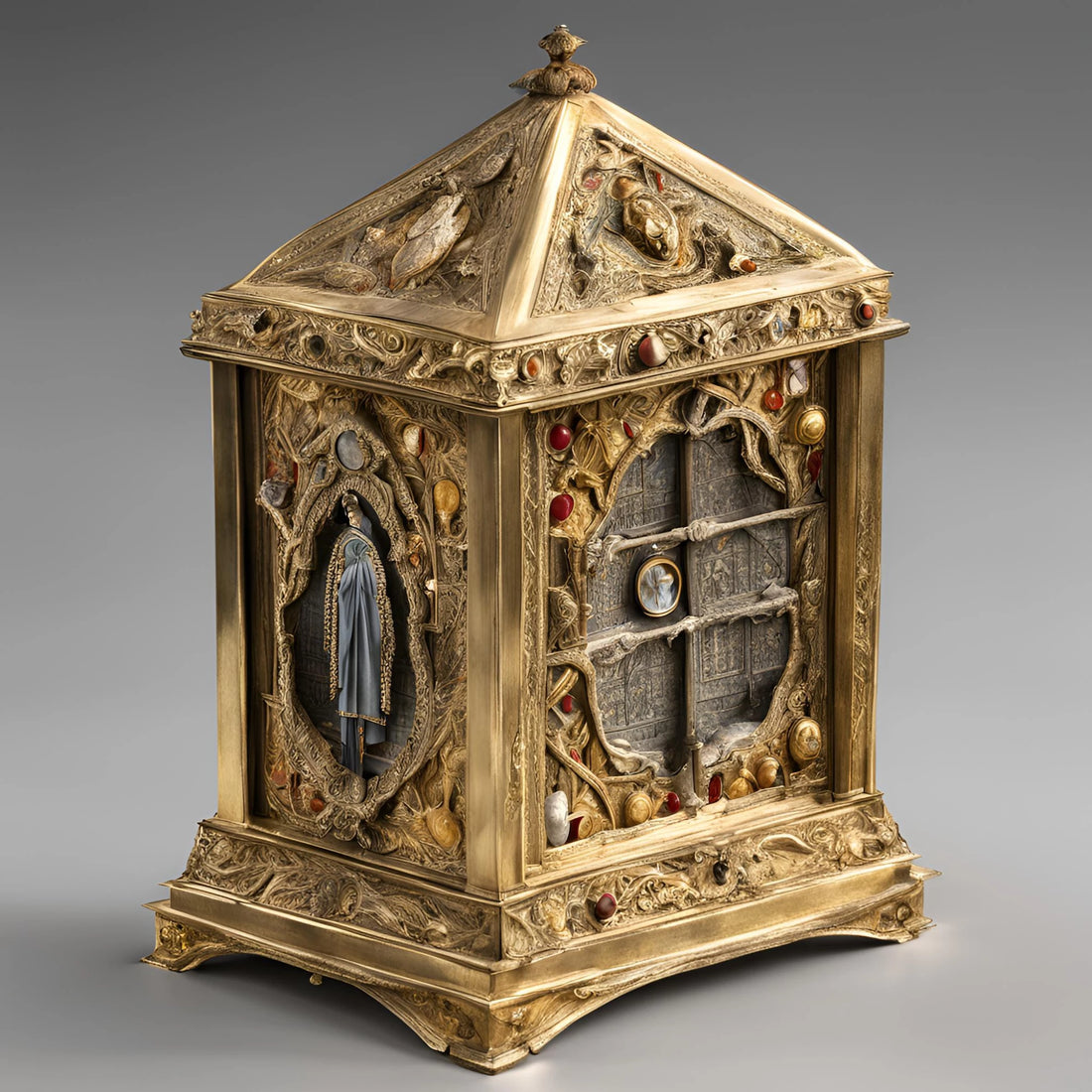Introduction
Reliquaries have been central to religious practices for centuries, serving as vessels that house sacred relics of saints and holy figures. Combining faith, artistry, and cultural significance, these objects connect the faithful to the divine while preserving sacred traditions.
What is a Reliquary?
A reliquary is a container designed to hold and display relics—sacred objects often linked to saints or important religious figures. Relics may include bones, clothing, or other items of spiritual significance.
Reliquary Meaning and Definition
The term "reliquary" comes from the Latin reliquiarium, meaning "a place for relics." This underscores its primary function: safeguarding objects of devotion. (Merriam-Webster Dictionary)
Plan Your Farewell with Grace – Our Pre-Planned Caskets Offer Peace of Mind
Historical Significance of Reliquaries
Reliquaries played an essential role in religious life, especially during the Middle Ages, when they were revered as symbols of divine presence. Pilgrims often traveled great distances to venerate these sacred vessels.
The design used to build reliquaries has also evolved over time. The earliest reliquaries were designed to resemble caskets. Some were even designed in the shape of churches. Others had scenes from the Old Testament and the New Testament depicted on the exterior. 
Then, during the Middle Ages, the designs evolved to take on the shapes of the relics housed within them. Some examples include cross-shaped reliquaries to hold the holy cross, or the shape of a body part to house bones from that body part. Reliquaries were also designed using transparent material, so people could see the contents without having to open the relic-holder.
Role in Medieval Christianity
In medieval churches, reliquaries became focal points of worship and pilgrimage. They were believed to perform miracles, such as healing the sick or blessing devotees.
Cultural and Artistic Impact
Reliquaries reflect the artistic values of their time. Gothic, Romanesque, and Byzantine designs illustrate the evolving styles and religious fervor of different historical periods.
Types of Reliquaries
Reliquaries come in various forms, each tailored to their contents. Common types include:
- Arm Reliquaries: Sculpted as human arms to contain fragments of saints' bones. (The Getty Museum)
- Shrine Reliquaries: Ornate structures resembling miniature chapels.
- Pendant Reliquaries: Small, portable containers used for personal devotion. (Art Through Time: A Global View)
Materials and Craftsmanship
Reliquaries were crafted using gold, silver, gemstones, and enamel to reflect their sacred purpose. Techniques like cloisonné enameling and gilding enhanced their intricate designs. (Victoria and Albert Museum)
Famous Examples of Reliquaries
The Shrine of the Three Kings
Located in Cologne Cathedral, this elaborate reliquary is said to house the remains of the Biblical Magi. (Cologne Cathedral)
The Arm Reliquary of Saint Louis
This reliquary, housed in the Basilica of Saint-Denis, contains a fragment of Saint Louis' bone and is shaped like a hand. (Basilica of Saint-Denis)
The Guelph Treasure
A medieval collection of reliquaries and other sacred objects originally stored in Brunswick Cathedral, Germany. (Smithsonian Magazine)
Purpose and Use of Reliquaries
Reliquaries serve multiple roles, including:
- Spiritual Significance: Offering a tangible connection to the divine.
- Cultural Heritage: Preserving religious and artistic traditions. (Victoria and Albert Museum)
- Objects of Pilgrimage: Drawing worshippers seeking blessings and miracles.

Frequently Asked Questions
What is a reliquary?
A reliquary is a container crafted to hold and display relics, such as bones, clothing, or objects associated with saints.
What materials are used to make reliquaries?
Reliquaries are often made from gold, silver, gemstones, and enamel, highlighting their religious significance.
Why are reliquaries significant in religious practices?
They provide a physical connection to saints and serve as focal points for devotion and rituals.
Can reliquaries be found outside Christianity?
Yes, while most prominent in Christianity, other religions also have traditions of venerating sacred objects.
Are reliquaries still used today?
Reliquaries remain vital in Catholic and Orthodox traditions, symbolizing enduring faith and cultural preservation.
Conclusion
Reliquaries embody faith, artistry, and history. They serve as sacred vessels preserving relics while inspiring awe and devotion. Today, they remain cherished symbols of religious and cultural heritage.

![Upgrade to Premium Weight [18-gauge steel]](http://titancasket.com/cdn/shop/products/casketthicknesswithnumbers.png?v=1680642906&width=533)






